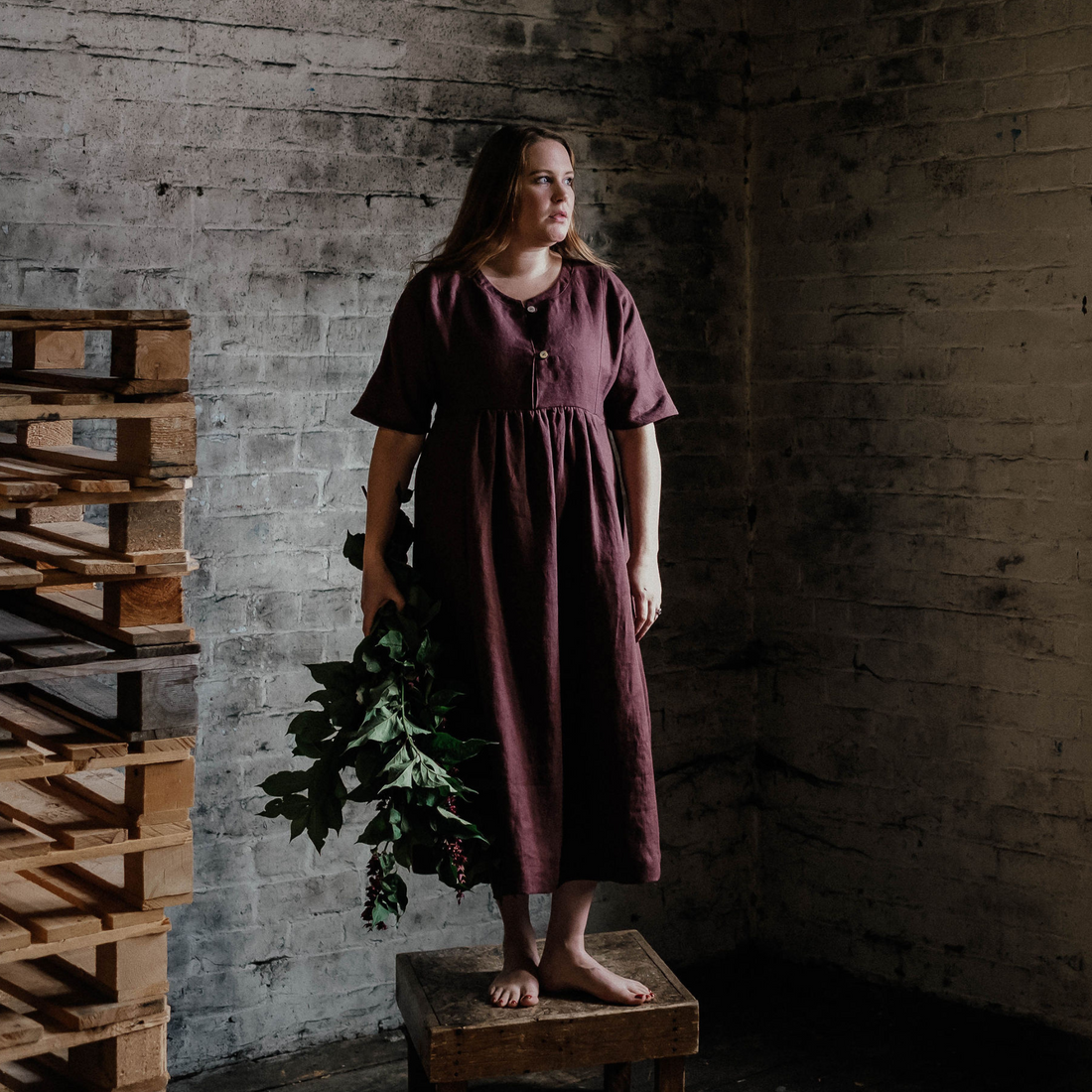
Sourcing materials has been a labour of love. To produce natural and enduring garments has always been my aim and I am doing this in a way that feels natural and honest. This starts with premium fabrics and designs that meet the needs of today and will endure for many tomorrows. Unassumingly stylish, pleasing to wear, and practical.
It takes time to find materials that you are happy to work with, sometimes the decision means choosing your poison! Sustainability is a complex intermingling of social and environmental impact. For example, wool is a natural fibre and it is biodegradable, however the sheep can be treated inhumanely–depending on the country you are sourcing from. Cotton may be organically-grown but it is not grown in the UK therefore the pollution emitted from shipping is just as hazardous as non-organic cotton.
I start with quality materials that look good and feel good as these are more likely to last and will remain favourites in any wardrobe. I source fabrics responsibly from reputable merchants who are open about their sources. Natural fibres are my choice to work with as they are recyclable and will naturally biodegrade over time which means the consumer has choices when it comes to the end of life for a garment. Oeko-Tex certification or GOTS certification is a must as they are certified more eco friendly choices.
The journey materials make is also important as many materials and products are bounced around the globe creating huge pollution. 
I consider the journey of our cloth from seed to sewing and give each cloth a numerical score. For example our needlecord used to create the Dorothy dress, Dorothy peplum and Joan pinafore has a great score of 2 because it only travels through 2 countries minimising its carbon footprint. The pima 100% cotton is grown, spun, dyed and woven in China, Oeko-Tex 100 certified and then sold by heritage fabric merchants, Brisbane Moss in Todmorden, England.
Each material we use has a 2 or 3 country score. This is because cotton and linen are not grown in the British Isles so currently we can't achieve a country score of 1. To score a 1 we would need to look at sourcing wool from UK farmers. This is something I will be exploring as we develop.

Linen is the most eco friendly fibre we use. It needs little or no fertilisers and little extra water. It doesn’t really require pesticides either as it can grow in poor quality soil. Every part of the plant is used, what isn’t used to produce linen can be used to make linseed oil, paper, cattle feed or even soap.
Linen is therefore almost naturally organic. It is completely biodegradable, recyclable and due to its natural absorbency, it requires less dye than cotton. We use European and Irish linen. Irish linen is grown in Europe then dyed and woven in Northern Ireland, unfortunately flax is not processed in Ireland currently.

You can find more details about our sources on our Transparency page.


